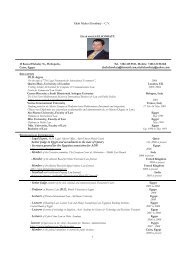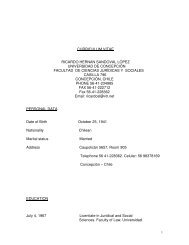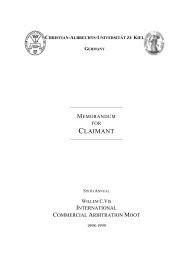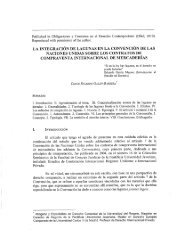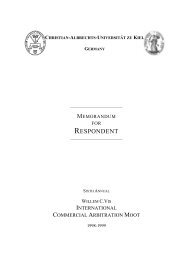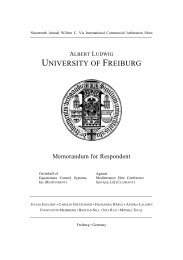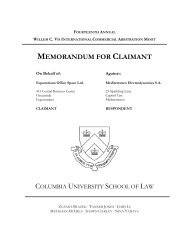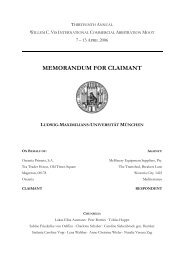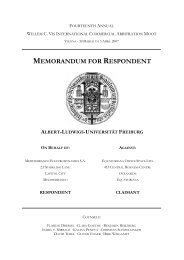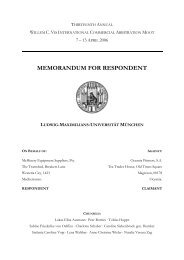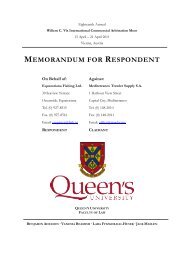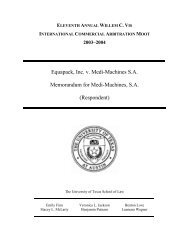Claimant's brief (Cologne) - Pace University
Claimant's brief (Cologne) - Pace University
Claimant's brief (Cologne) - Pace University
You also want an ePaper? Increase the reach of your titles
YUMPU automatically turns print PDFs into web optimized ePapers that Google loves.
UNIVERSITY OF COLOGNE Page 14<br />
2. Alternatively, RESPONDENT committed a fundamental breach of contract by not<br />
warning CLAIMANT that the machines were not capable of packaging salt<br />
52 In case the Tribunal finds that the parties did not contract for machines capable of packaging<br />
salt, RESPONDENT nevertheless committed a fundamental breach by its failure to warn<br />
CLAIMANT not to use the machines for the packaging of salt (c.f. supra 29 et seq.).<br />
53 It is a fundamental breach of contract not to provide the buyer with the necessary information<br />
to handle or operate the sold goods if this renders the goods unusable (ICC Award No.<br />
8128/1995, UNILEX Case No. 1995-34). Due to RESPONDENT’s failure to inform<br />
CLAIMANT about the incapability of the machines to process salt, CLAIMANT used the<br />
machines with salt which led to their destruction. For the reasons mentioned above (see supra<br />
47 et seq.) this fundamental breach concerned the entire contract.<br />
3. Additionally, RESPONDENT committed a fundamental breach by delivering<br />
machines substantially below the average industry standard in performance and<br />
design<br />
54 In addition, CLAIMANT suffered a substantial detriment by the delivery of machines below<br />
average industry standard irrespective of the machines’ incapability to process salt.<br />
55 The delivered Model 14 machines attained a production rate of just 130 to 135 bags per<br />
minute for fine goods (Expert’s report para. 3). This was only up to 75 % of the 180 bags of<br />
an average industry standard machine. Thus, the total production rate of the machines was<br />
equivalent to only 4.5 standard auger-feeder machines. However, CLAIMANT needed six<br />
fully functioning machines to serve its contract with A2Z (Procedural Order No. 3 at 35).<br />
56 Therefore, to satisfy its needs CLAIMANT would have to purchase two additional Model 14<br />
machines. However, this is not acceptable. First, there are no more Model 14 machines<br />
available, since RESPONDENT had sold its last Model 14 machines to CLAIMANT<br />
(Procedural Order No. 3 at 33). Thus, CLAIMANT would have to purchase replacement<br />
machines from another source. Yet, for practical reasons, e.g. training of CLAIMANT’s<br />
personnel on different models, this would complicate the production process.<br />
57 Secondly, the space on CLAIMANT’s production site is limited and CLAIMANT is not able<br />
to provide space for the additional machines (Claimant’s Exhibit No. 6). Hence, CLAIMANT<br />
was neither able to fulfil its contract with A2Z using the slower Model 14 machines nor was it<br />
able to purchase and operate additional machines. CLAIMANT thereby substantially was<br />
deprived of what it expected under the present contract.



